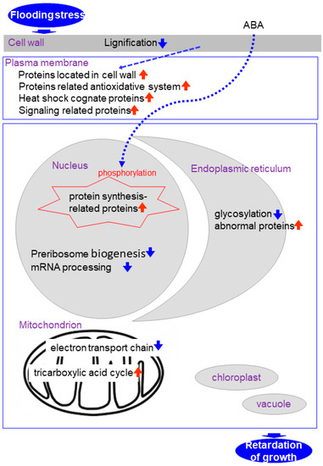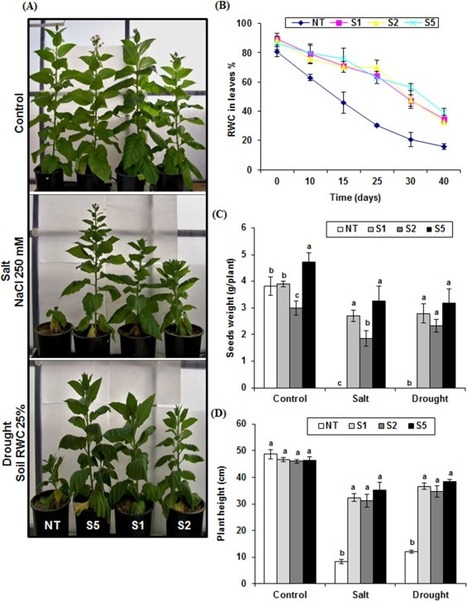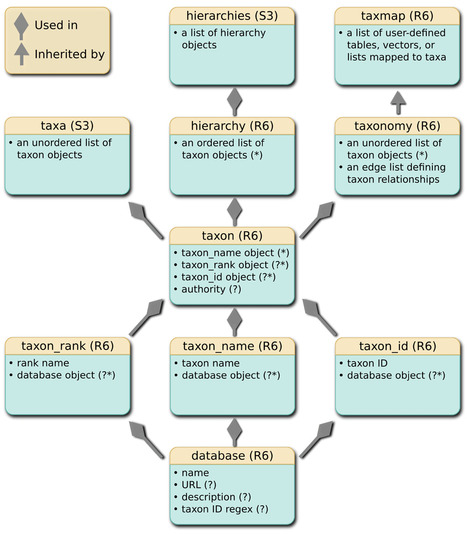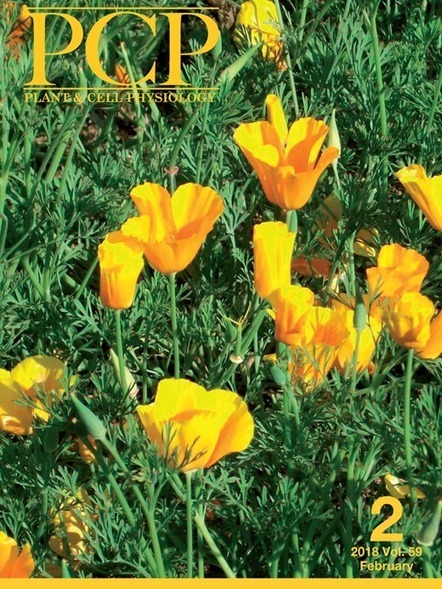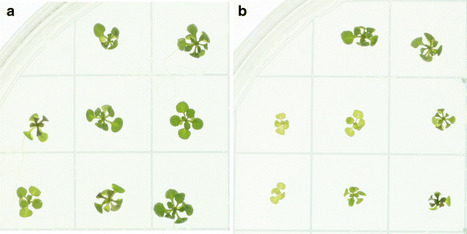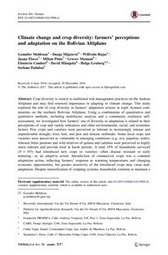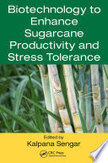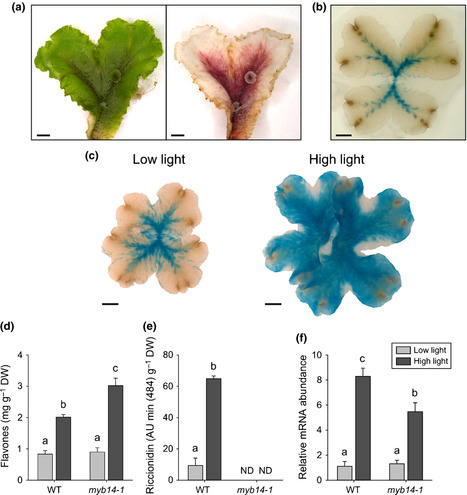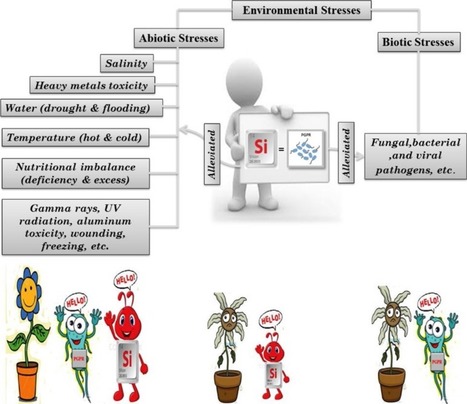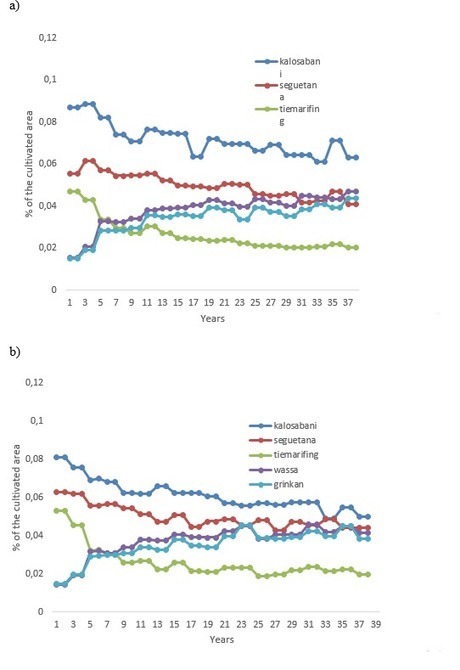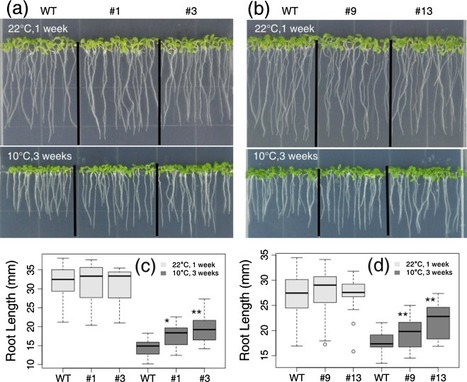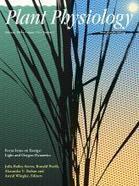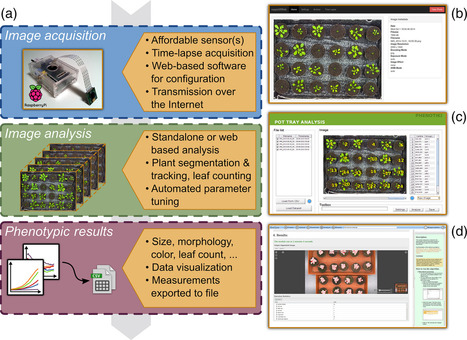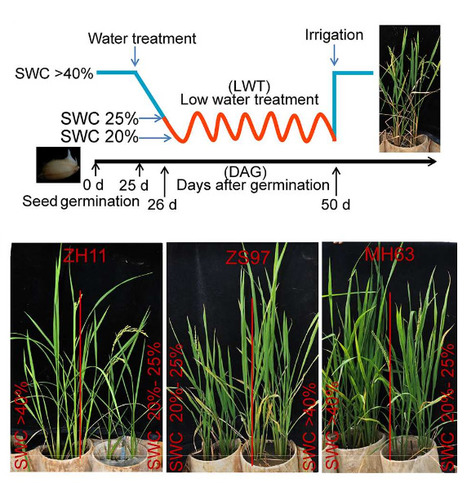 Your new post is loading...

|
Scooped by
Harold Duruflé
March 26, 2018 2:32 AM
|
Soybean, which is rich in protein and oil, is cultivated in several climatic zones; however, its growth is markedly decreased by flooding. Proteomics is a useful tool for understanding the flooding-response mechanism in soybean. Subcellular proteomics has the potential to elucidate localized cellular responses and investigate communications among subcellular components during plant growth and during stress. Under flooding, proteins related to signaling, stress and the antioxidative system are increased in the plasma membrane; scavenging enzymes for reactive-oxygen species are suppressed in the cell wall; protein translation is suppressed through inhibition of proteins related to preribosome biogenesis and mRNA processing in the nucleus; levels of proteins involved in the electron transport chain are reduced in the mitochondrion; and levels of proteins related to protein folding are decreased in the endoplasmic reticulum. This review discusses the advantages of a gel-free/label-free proteomic technique and methods of plant subcellular purification. It also summarizes cellular events in soybean under flooding and discusses future prospects for generation of flooding-tolerant soybean.
First International Plant Systems Biology, (a J. Monod Conference), 10-14 of September 2018, save the date

|
Scooped by
Harold Duruflé
March 12, 2018 8:35 AM
|
We characterized a novel stress tolerance gene from Aeluropus littoralis encoding a protein designed as AlSRG1 (A. littoralisStress-Related Gene 1). Phylogenetic and conserved domain prediction identified AlSRG1 as an uncharacterized protein of unknown function. The conserved domain database revealed that AlSRG1 contains an RNA-recognition motif (RRM). This domain was highlighted in AlSRG1 primary, secondary and tertiary structures with the two conserved motifs RNP1 and RNP2 being part of it. These two conserved motifs contain the active site for RNA-binding and a 3D-model of conserved domain (AlSRG1p) was built from known X-ray structures and sequence alignments. The analysis with RT-qPCR revealed higher AlSRG1 transcript accumulation under salt and osmotic stresses. Overexpression of AlSRG1 in transgenic tobacco plants improved both salt and osmotic tolerance and was accompanied by higher seedling survival rates, better growth parameters and ROS accumulation than non-transgenic plants (NT). Furthermore, the transgenic tobacco plants were able to complete their life cycle and to produce viable seeds while the NT plants died at the vegetative stage. The AlSRG1 transgenic lines compared to NT tobacco, showed a significantly lower water loss rate in senescent-basal leaves. AlSRG1 overexpression also enhanced the transcript levels of ROS-scavenging genes and some stress-related transcription factors under salt and osmotic stresses. Taken together, these results show that AlSRG1 may play an important positive modulation role in abiotic stress tolerance.

|
Rescooped by
Harold Duruflé
from The science toolbox
March 6, 2018 4:41 AM
|
The taxa R package provides a set of tools for defining and manipulating taxonomic data. The recent and widespread application of DNA sequencing to community composition studies is making large data sets with taxonomic information commonplace. However, compared to typical tabular data, this information is encoded in many different ways and the hierarchical nature of taxonomic classifications makes it difficult to work with. There are many R packages that use taxonomic data to varying degrees but there is currently no cross-package standard for how this information is encoded and manipulated. We developed the R package taxa to provide a robust and flexible solution to storing and manipulating taxonomic data in R and any application-specific information associated with it. Taxa provides parsers that can read common sources of taxonomic information (taxon IDs, sequence IDs, taxon names, and classifications) from nearly any format while preserving associated data. Once parsed, the taxonomic data and any associated data can be manipulated using a cohesive set of functions modeled after the popular R package dplyr. These functions take into account the hierarchical nature of taxa and can modify the taxonomy or associated data in such a way that both are kept in sync. Taxa is currently being used by the metacoder and taxize packages, which provide broadly useful functionality that we hope will speed adoption by users and developers.
Via Niklaus Grunwald

|
Scooped by
Harold Duruflé
February 28, 2018 3:31 AM
|
One of the major challenges in today’s agriculture is to achieve enhanced plant growth and biomass even under adverse environmental conditions. Recent advancements in genetics and molecular biology have enabled identification of a complex signaling network contributing towards plant growth and development on the one hand and abiotic stress response on the other. As an outcome of these studies, three major approaches have been identified having a potential to improve biomass production in plants under abiotic stress conditions. These approaches deal with having changes in (i) plant-microbe interactions, (ii) cell wall biosynthesis, and (iii) phytohormone levels. In addition, and at the same time, employing functional genomics and genetics-based approaches, a very large number of genes have been identified which play a key role in abiotic stress tolerance. Our review is an attempt to unveil the crosstalk between the transcriptional circuitries for biomass production and abiotic stress response that has just started emerging. This knowledge may serve as a valuable resource to eventually custom design the crop plants for higher biomass production in a more sustainable manner, in marginal lands under variable climatic conditions.

|
Scooped by
Harold Duruflé
February 28, 2018 3:05 AM
|
The sessile lifestyle of higher plants is accompanied by their remarkable ability to tolerate unfavourable environmental conditions. This is, because during evolution plants developed a sophisticated repertoire of molecular and metabolic reactions to cope with changing biotic and abiotic challenges. In particular, the abiotic factors light intensity and ambient temperature are characterized by altering their amplitude within comparably short periods of time and are causative for onset of dynamic plant responses. These rapid responses in plants are also classified as “acclimation reactions” which differ, due to their reversibility and duration, from non-reversible “adaptation reactions”. In this review, we demonstrate the remarkable importance of stress-induced changes in carbohydrate homeostasis of plants exposed to high light or low temperatures. These changes represent a coordinated process comprising modifications of (i) the concentrations of selected sugars, (ii) starch turnover, (iii) intracellular sugar compartmentation and (iv) corresponding gene expression patterns. The critical importance of these individual processes has been underlined in recent past by the analyses of a wide number of mutant plants. The outcome of these analyses raised our understanding of acclimation processes in plants per se but might even become instrumental to develop new concepts for directed breeding approaches with the aim to increase abiotic stress tolerance of crop species which in most cases have high stress-sensitivity. Latter direction of plant research is of special importance since abiotic stress stimuli strongly impact on crop productivity and are expected to become even more pronounced because of human activities which alter environmental conditions rapidly.

|
Scooped by
Harold Duruflé
February 26, 2018 8:39 AM
|
Growth is an important parameter to consider when studying the impact of treatments or mutations on plant physiology. Leaf area and growth rates can be estimated efficiently from images of plants, but the experiment setup, image analysis, and statistical evaluation can be laborious, often requiring substantial manual effort and programming skills. Here we present rosettR, a non-destructive and high-throughput phenotyping protocol for the measurement of total rosette area of seedlings grown in plates in sterile conditions. We demonstrate that our protocol can be used to accurately detect growth differences among different genotypes and in response to light regimes and osmotic stress. rosettR is implemented as a package for the statistical computing software R and provides easy to use functions to design an experiment, analyze the images, and generate reports on quality control as well as a final comparison across genotypes and applied treatments. Experiment procedures are included as part of the package documentation. Using rosettR it is straight-forward to perform accurate, reproducible measurements of rosette area and relative growth rate with high-throughput using inexpensive equipment. Suitable applications include screening mutant populations for growth phenotypes visible at early growth stages and profiling different genotypes in a wide variety of treatments.

|
Scooped by
Harold Duruflé
February 22, 2018 8:59 AM
|
Up to now, the most widely accepted idea of the periglacial environment is that of treeless ecosystems such as the arctic or the alpine tundra, also called the tabula rasa paradigm. However, several palaeoecological studies have recently challenged this idea, that is, treeless environments in periglacial areas where all organisms would have been exterminated near the glacier formed during the Last Glacial Maximum, notably in the Scandinavian mountains. In the Alps, the issue of glacial refugia of trees remains unanswered. Advances in glacier reconstructions show that ice domes did not cover all upper massifs, but glaciers filled valleys. Here, we used fossils of plant and malacofauna from a travertine formation located in a high mountain region to demonstrate that trees (Pinus, Betula) grew with grasses during the Lateglacial-Holocene transition, while the glacier fronts were 200–300 m lower. The geothermal travertine started to accumulate more than 14,500 years ago, but became progressively more meteogene about 11,500 years ago due to a change in groundwater circulation. With trees, land snails (gastropods) associated to woody or open habitats and aquatic mollusc were also present at the onset of the current interglacial, namely the Holocene. The geothermal spring, due to warm water and soil, probably favoured woody glacial ecosystems. This new finding of early tree growth, combined with other scattered proofs of the tree presence before 11,000 years ago in the western Alps, changes our view of the tree distribution in periglacial environments, supporting the notion of tree refugia on nunataks in an ocean of glaciers. Therefore, the tabula rasa paradigm must be revisited because it has important consequences on the global changes, including postglacial plant migrations and biogeochemical cycles.

|
Scooped by
Harold Duruflé
February 14, 2018 8:16 AM
|
Al-induced organic acid secretion from the root apex is an important Al resistance mechanism. However, it remains unclear how plants fine-tune root organic acid secretion which can contribute significantly to the loss of fixed carbon from the plant. Here, we demonstrate that Al-induced citrate secretion from the rice bean root apex is biphasic, consisting of an early phase with low secretion and a later phase of large citrate secretion. We isolated and characterized VuMATE2 as a possible second citrate transporter in rice bean functioning in tandem with VuMATE1, which we previously identified. The time-dependent kinetics of VuMATE2 expression correlates well with the kinetics of early phase root citrate secretion. Ectopic expression of VuMATE2 in Arabidopsis resulted in increased root citrate secretion and Al resistance. Electrophysiological analysis of Xenopus oocytes expressing VuMATE2 indicated VuMATE2 mediates anion efflux. However, the expression regulation of VuMATE2 differs from VuMATE1. While a protein translation inhibitor suppressed Al-induced VuMATE1 expression, it releases VuMATE2 expression. Yeast one-hybrid assays demonstrated that a previously identified transcription factor, VuSTOP1, interacts with the VuMATE2 promoter at a GGGAGG cis-acting motif. Thus, we demonstrate that plants adapt to Al toxicity by fine-tuning root citrate secretion with two separate root citrate transport systems.

|
Rescooped by
Harold Duruflé
from Agricultural Biodiversity
February 13, 2018 4:39 AM
|
Climate change and crop diversity: farmers’ perceptions and adaptation on the Bolivian Altiplano View/Open Authors Meldrum, G. Mijatovic, D. Rojas, W. Flores, J. Pinto, M. Mamani, G. Condori, E. Hilaquita, D. Gruberg, H. Padulosi, S.
Via Luigi Guarino

|
Scooped by
Harold Duruflé
February 1, 2018 5:29 AM
|
Sugarcane is the most important plant source for sugar and alcohol production and is cultivated in more than 80 countries in tropical and subtropical areas. However, environmental factors negatively influence its yield and jeopardize the prospect to meet the increasing demand for sugar, other sugarcane derived by products and bioethanol. The development of stress tolerant plants is fundamental for the maintenance and increase of crop yields. Biotechnology to Enhance Sugarcane Productivity and Stress Tolerance provides a comprehensive account of both theoretical and practical aspects of sugarcane production. It contains extensive coverage of genome mapping and molecular breeding in sugarcane and presents the status of the elucidation and improvement of plant genomes of economic interest. Through 14 chapters written by eminent scientists with global influence, this book examines various methods for sugarcane improvement through biotechnology. The book focuses on genetic and physical mapping, positioning, cloning, and monitoring of desirable genes using biotechnological approaches for high sugarcane productivity and the development of stress tolerance. Additional information includes the bioengineering of sugarcane, procedures to boost productivity, genetics and assessments for resistance to drought and salinity, genetics for high yields, and various topics of research on sugarcane genetics. It serves as a detailed reference source for cane growers, sugar and sugarcane technologists, students, and professors.

|
Scooped by
Harold Duruflé
January 25, 2018 2:58 AM
|
The flavonoid pathway is hypothesized to have evolved during land colonization by plants c. 450 Myr ago for protection against abiotic stresses. In angiosperms, R2R3MYB transcription factors are key for environmental regulation of flavonoid production. However, angiosperm R2R3MYB gene families are larger than those of basal plants, and it is not known whether the regulatory system is conserved across land plants. We examined whether R2R3MYBs regulate the flavonoid pathway in liverworts, one of the earliest diverging land plant lineages. We characterized MpMyb14 from the liverwort Marchantia polymorpha using genetic mutagenesis, transgenic overexpression, gene promoter analysis, and transcriptomic and chemical analysis. MpMyb14 is phylogenetically basal to characterized angiosperm R2R3MYB flavonoid regulators. Mpmyb14 knockout lines lost all red pigmentation from the flavonoid riccionidin A, whereas overexpression conferred production of large amounts of flavones and riccionidin A, activation of associated biosynthetic genes, and constitutive red pigmentation. MpMyb14 expression and flavonoid pigmentation were induced by light- and nutrient-deprivation stress in M. polymorpha as for anthocyanins in angiosperms. MpMyb14 regulates stress-induced flavonoid production in M. polymorpha, and is essential for red pigmentation. This suggests that R2R3MYB regulated flavonoid production is a conserved character across land plants which arose early during land colonization.
Highlights
• Si and PGPRs are capable in enhancing plant resistance to multiple stresses.
• PGPRs alone often fail to confer their beneficial effects in the field.
• Combined use of PGPRs and Si has a potential for improved action.
• Research on their interaction in the combination is a novel field.
Increased environmental stresses are among the most limiting factors for agricultural productivity across the world. Reliable, environmentally friendly techniques are needed to sustainably meet growing global food demands. Some plant-microbe interactions can alleviate stress, with the application of plant growth promoting rhizobacteria (PGPRs) that is now widely in use. It has been known that PGPRs enhance plant growth and plant tolerance to biotic and abiotic stresses by different action mechanisms, often more than one mechanism. Application of silicon (Si) can also stimulate plant growth and alleviate an array of biotic and abiotic stresses in plants. In addition, Si is not detrimental to plants and, depending on application method, can be free from pollution even when applied in excess. Here, I compare and contrast the mechanisms, as far as they are known, through which Si and PGPRs can alleviate abiotic and biotic stresses in plants. Both alleviate a similar suite of abiotic and biotic stresses, with a few interesting exceptions, though mechanisms differ. I suggest the combined use of Si and PGPRs can be a powerful and sustainable strategy to enhance plant growth in sub-optimal conditions, and hence experiments assessing the combined use of Si and PGPRs on plants suffering abiotic and biotic stress can be fruitful in the future.
Via Plant Science
|

|
Rescooped by
Harold Duruflé
from plant cell genetics
March 20, 2018 12:48 PM
|
Traditionally, Sicilian blood oranges (Citrus sinensis) have been associated with cardiovascular health, and consumption has been shown to prevent obesity in mice fed a high-fat diet. Despite increasing consumer interest in these health-promoting attributes, production of blood oranges remains unreliable due largely to a dependency on cold for full color formation. We show that Sicilian blood orange arose by insertion of a Copia-like retrotransposon adjacent to a gene encoding Ruby, a MYB transcriptional activator of anthocyanin production. The retrotransposon controls Ruby expression, and cold dependency reflects the induction of the retroelement by stress. A blood orange of Chinese origin results from an independent insertion of a similar retrotransposon, and color formation in its fruit is also cold dependent. Our results suggest that transposition and recombination of retroelements are likely important sources of variation in Citrus.
Via Jean-Pierre Zryd

|
Scooped by
Harold Duruflé
March 15, 2018 4:51 AM
|
Epigenetic components, including cytosine methylation, histone modifications, and small RNA accumulation are key marks regulating various plant traits including growth, development, and response to biotic and abiotic stimuli. This special issue, which includes two opinion papers, five reviews, and eight research articles, highlights the importance and functions of epigenetic mechanisms in various developmental and stress contexts.

|
Rescooped by
Harold Duruflé
from Agricultural Biodiversity
March 9, 2018 5:30 AM
|
This paper presents a generic, agent-based model that simulates the dynamics of crop varietal diversity at the village level in Mali under different socio-economic, environmental and policy scenarios. The model is designed to integrate social, economic, environmental, and policy factors . A participatory approach with scientists, farmers and policy makers has been implemented to achieve this goal. This approach combines role playing games with agent-based modelling. A set of scenarios are elaborated to evaluate the possible impacts of policy interventions and climate change on agrobiodiversity dynamics. Simulations showed how farmers manage crop varietal diversity to cope with the local climate variability for their annual crop production. The portfolio of varieties increases under stable and good climate condition and decrease under less favourable and variable climate conditions. In addition, depending on the climate condition, farmers allocate preferentially land to varieties with higher yields.
Via Luigi Guarino

|
Scooped by
Harold Duruflé
March 2, 2018 3:47 AM
|
Plant pectin methyl-esterase (PME) and PME inhibitor (PMEI) belong to large gene families whose members are proposed to be widely involved in growth, development, and stress responses; however, the biological functions of most PMEs and PMEIs have not been characterized. In this study, we studied the roles of CbPMEI1, a cold-induced pectin methyl-esterase inhibitor (PMEI) gene from Chorispora bungeana, under freezing and salt stress. The putative CbPMEI1 peptide shares highest similarity (83%) with AT5G62360 (PMEI13) of Arabidopsis. Overexpression of either CbPMEI1 or PMEI13 in Arabidopsis decreased tissue PME activity and enhanced the degree of methoxylation of cell wall pectins, indicating that both genes encode functional PMEIs. CbPMEI1 and PMEI13 were induced by cold but repressed by salt stress and abscisic acid, suggesting distinct roles of the genes in freezing and salt stress tolerance. Interestingly, transgenic Arabidopsis plants overexpressing CbPMEI1 or PMEI13 showed decreased freezing tolerance, as indicated by survival and electrolyte leakage assays. On the other hand, the salt tolerance of transgenic plants was increased, showing higher rates of germination, root growth, and survival under salinity conditions as compared with non-transgenic wild-type plants. Although the transgenic plants were freezing-sensitive, they showed longer roots than wild-type plants under cold conditions, suggesting a role of PMEs in balancing the trade-off between freezing tolerance and growth. Thus, our study indicates that CbPMEI1 and PMEI13 are involved in root growth regulation under cold and salt stresses, and suggests that PMEIs may be potential targets for genetic engineering aimed to improve fitness of plants under stress conditions.

|
Scooped by
Harold Duruflé
February 28, 2018 3:08 AM
|
Abiotic stresses reveal profound impacts on plant proteomes including alterations in protein relative abundance, cellular localization, post-transcriptional and post-translational modifications (PTMs), protein interactions with other protein partners, and, finally, protein biological functions. The main aim of the present review is to discuss the major factors determining stress-related protein accumulation and their final biological functions. A dynamics of stress response including stress acclimation to altered ambient conditions and recovery after the stress treatment is discussed. The results of proteomic studies aimed at a comparison of stress response in plant genotypes differing in stress adaptability reveal constitutively enhanced levels of several stress-related proteins (protective proteins, chaperones, ROS scavenging- and detoxification-related enzymes) in the tolerant genotypes with respect to the susceptible ones. Tolerant genotypes can efficiently adjust energy metabolism to enhanced needs during stress acclimation. Stress tolerance vs. stress susceptibility are relative terms which can reflect different stress-coping strategies depending on the given stress treatment. The role of differential protein isoforms and PTMs with respect to their biological functions in different physiological constraints (cellular compartments and interacting partners) is discussed. The importance of protein functional studies following high-throughput proteome analyses is presented in a broader context of plant biology. In summary, the manuscript tries to provide an overview of the major factors which have to be considered when interpreting data from proteomic studies on stress-treated plants.

|
Scooped by
Harold Duruflé
February 26, 2018 8:41 AM
|
Acclimation to water deficit (WD) enables plants to maintain growth under unfavorable environmental conditions, although the mechanisms are not completely understood. In this study, the natural variation of long-term acclimation to moderate (MWD) and severe (SWD) soil water deficits was investigated in 18 Arabidopsis accessions using PHENOPSIS, an automated phenotyping platform. Soil water content was adjusted at an early stage of plant development and maintained at a constant level until reproductive age was achieved. The accessions were selected based on the expression levels of ANNEXIN 1, a drought-related marker. SWD conditions had a greater effect on most of the measured morpho-physiological traits than MWD conditions. Multivariate analyses indicated that trait responses associated with plant size and water management drove most of the variation. Accessions with similar responses at these two levels were grouped in clusters that displayed different response strategies to WD. The expression levels of selected stress-response genes revealed large natural variation under WD conditions. Responses of morpho-physiological traits such as projected rosette area, transpiration rate, and rosette water content were correlated with changes in the of expression of stress related genes, such as NINE-CIS-EPOXYCAROTENOID DIOXYGENASE 3 and N-MYC DOWNREGULATED-LIKE 1 (NDL1), in response to WD. Interestingly, the morpho-physiological acclimation response to WD was also reflected in the gene expression levels, (most notably those of NDL1, CHALCONE SYNTHASE and MYB DOMAIN PROTEIN 44), in plants cultivated under well-watered conditions. Our results may lead to the development of biomarkers and predictors of plant morpho-physiological responses based on gene expression patterns.

|
Scooped by
Harold Duruflé
February 26, 2018 8:37 AM
|
Phenotyping is important to understand plant biology, but current solutions are costly, not versatile or are difficult to deploy. To solve this problem, we present Phenotiki, an affordable system for plant phenotyping that, relying on off-the-shelf parts, provides an easy to install and maintain platform, offering an out-of-box experience for a well-established phenotyping need: imaging rosette-shaped plants. The accompanying software (with available source code) processes data originating from our device seamlessly and automatically. Our software relies on machine learning to devise robust algorithms, and includes an automated leaf count obtained from 2D images without the need of depth (3D). Our affordable device (~€200) can be deployed in growth chambers or greenhouse to acquire optical 2D images of approximately up to 60 adult Arabidopsis rosettes concurrently. Data from the device are processed remotely on a workstation or via a cloud application (based on CyVerse). In this paper, we present a proof-of-concept validation experiment on top-view images of 24 Arabidopsis plants in a combination of genotypes that has not been compared previously. Phenotypic analysis with respect to morphology, growth, color and leaf count has not been performed comprehensively before now. We confirm the findings of others on some of the extracted traits, showing that we can phenotype at reduced cost. We also perform extensive validations with external measurements and with higher fidelity equipment, and find no loss in statistical accuracy when we use the affordable setting that we propose. Device set-up instructions and analysis software are publicly available ( http://phenotiki.com).

|
Scooped by
Harold Duruflé
February 19, 2018 2:49 AM
|
Senescence is an age-dependent process, ultimately leading to plant death, that in annual crop plants overlaps with the reproductive stage of development. Research on the molecular and biochemical mechanisms of leaf senescence has revealed a multi-layered regulatory network operating to control age-dependent processes. Abiotic stress-induced senescence challenges source–sink relationships and results in significant reduction in crop yields. Although processes associated with plant senescence are well studied, the mechanisms regulating stress-induced senescence are not well known. Here, we discuss the effects of abiotic stress on crop productivity, mechanisms associated with stress-induced senescence, and the possible use of these mechanisms for the generation of plant stress tolerance. We emphasize the involvement of source strength and stability of the photosynthetic apparatus in this process, and suggest a possible role of a perennial plant life strategy for the amelioration of stress-induced senescence.

|
Rescooped by
Harold Duruflé
from Amazing Science
February 13, 2018 4:40 AM
|
Earth’s global surface temperatures in 2017 ranked as the second warmest since reliable instrumental records began in 1880, according to an analysis by NASA released today. Continuing the planet’s long-term warming trend, globally averaged temperatures in 2017 were 1.62 degrees Fahrenheit (0.90 degrees Celsius) warmer than the 1951 to 1980 mean, according to scientists at NASA’s Goddard Institute for Space Studies (GISS) in New York. That is second only to global temperatures in 2016. In a separate, independent analysis, scientists at the National Oceanic and Atmospheric Administration (NOAA) concluded that 2017 was the third-warmest year in their record. The minor difference in rankings is due to the different methods used by the two agencies, although over the long term the agencies’ records remain in strong agreement. Both analyses show that the five warmest years on record all have taken place since 2010. Phenomena such as El Niño or La Niña, which warm or cool the upper tropical Pacific Ocean and cause corresponding variations in global wind and weather patterns, contribute to short-term variations in global average temperature. A warming El Niño event was in effect for most of 2015 and the first third of 2016. Even without an El Niño event – and with a La Niña starting in the later months of 2017 – last year’s temperatures ranked between 2015 and 2016 in NASA’s records. In an analysis where the effects of the recent El Niño and La Niña patterns were statistically removed from the record, 2017 would have been the warmest year on record.
Via Dr. Stefan Gruenwald

|
Scooped by
Harold Duruflé
February 1, 2018 5:32 AM
|
The alteration of cell wall component and structure is an important adaption to saline environment. Pectins, a major cell wall component, are often present in a highly methylesterified form. The level of methyl esterification determined by pectin methylesterases (PMEs) influences many important wall properties that are believed to relate to the adaption to saline stress. However, little is known about the function of PMEs in response to salt stress. Here, we established a link between pectin methylesterase31 (PME31) and salt stress tolerance. Salt stress significantly increases PME31 expression. PME31 is located in the plasma membrane and the expression level of PME31 was high in dry seeds. Knock-down mutants in PME31 conferred hypersensitive phenotypes to salt stress in seed germination and post-germination growth. Real-time PCR analysis revealed that the transcript levels of several stress genes (DREB2A, RD29A and RD29B) are lower in pme31-2 mutant than that in the wild type in response to salt stress. These results suggested that PME31 could positively modulate salt stress tolerance.

|
Scooped by
Harold Duruflé
January 26, 2018 5:40 AM
|
As the group II LEA (late embryogenesis abundant) proteins, dehydrins (DHNs) play an important role in plant growth and development, as well as in response to abiotic or biotic stress challenges. In this study, a DHN gene named CsLEA11 was identified and characterized from Cucumis sativus. Sequence analysis of CsLEA11 showed that it is a Y3SK2-type DHN protein rich in hydrophilic amino acids. Expression analyses revealed that the transcription of CsLEA11 could be significantly induced by heat and cold stress. The recombinant plasmid was transformed into Escherichia coli BL21 and isopropy-β-D-thiogalactoside (IPTG) was used to induce recombinant E. coli to express CsLEA11 gene. Overexpression of CsLEA11 in E. coli enhanced cell viability and conferred tolerance to heat and cold stress. Furthermore, CsLEA11 protein could protect the activity of lactate dehydrogenase (LDH) under heat stress. Taken together, our data demonstrate that CsLEA11 might function in tolerance of cucumber to heat and cold stress.
Many plants have evolved a drought escape (DE) mechanism to shorten their life cycle when facing water-deficit conditions. While drought tolerance has been intensively investigated, the genetic and molecular mechanisms of DE remain elusive. We found that low water-deficit treatment (LWT) at the early stage of rice development can trigger early flowering and reduced tiller numbers. LWT induced the accumulation of ABA which in turn feedback affected the light perception and circadian clock by synchronously regulating many flowering-related genes to promote early flowering. Moreover, some of the light receptors, circadian components, and flowering-related genes including OsTOC1, Ghd7, and PhyB were found to be involved in LWT in an ABA-dependent manner, whereas some of the other flowering-related genes including OsGI, OsELF3, OsPRR37, and OsMADS50 were involved in the regulation of DE independent of ABA. In addition, we found that strigolactones and OsTB1 are involved in the tillering inhibition under LWT, which is independent of the flowering pathway in rice. Taken together, our findings provide compelling evidence that DE in rice is coordinately regulated by multiple pathways in the reproduction (flowering) switch.
Via Plant Science
|

 Your new post is loading...
Your new post is loading...





